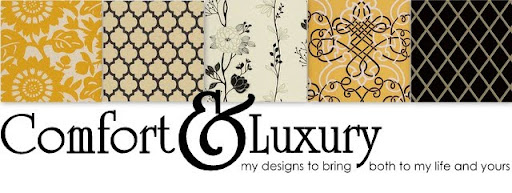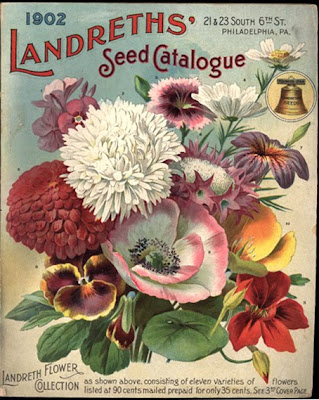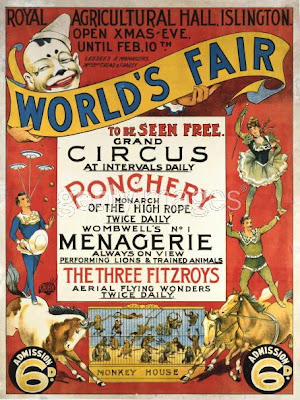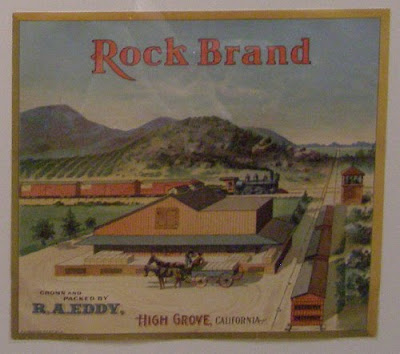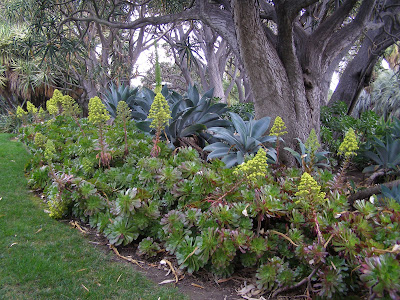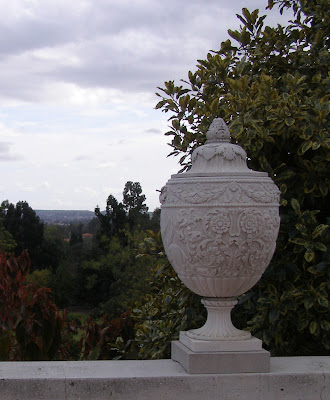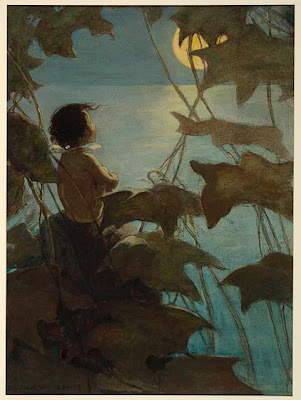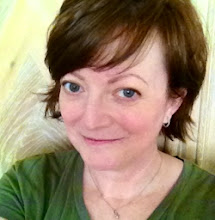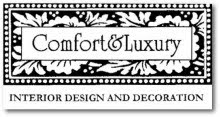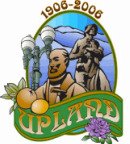
Okay, so I wasn't really in Pasadena. I was in San Marino. But I didn't want you to think I had flown off to some
faraway island or
magical castle. Judging by just the one photo on my last post, I could have been far away—and it certainly felt that way while I was there. To clarify, the San Marino I visited is a tiny city of only 3.8 square miles that is bordered on three sides by Pasadena, California. Do you remember the movie "Father of the Bride"? The family of the bride lived in San Marino—although I believe the exteriors of their home and neighborhood were filmed almost entirely in Pasadena. Julia knows for sure and you can see more about
that home here.

Enjoy the view and then turn around. . .
This house with the great view was once home to Henry and Arabella Huntington. At the turn of the 20th century, Henry Huntington was an exceptionally successful businessman who built a financial empire that included railroads, utility companies and real estate holdings. His business ventures led him across the country from New York to San Francisco and, in 1902, to Southern California. In 1911, his Beaux-Arts mansion, designed by architect Myron Hunt, was completed on the property once known as the San Marino Ranch. He married Arabella two years later.

. . . this is what's behind you.
Henry, himself possessed of a special interest in books, art and gardens that had led him to begin his own important collections, was now wed to one of the most highly influential art collectors of her generation. Together, the two amassed materials for what would become one of the finest research libraries in the world and collected rare books and manuscripts of Anglo-American civilization (spanning the ages with the likes of an original Gutenberg Bible and works by Charles Darwin, Thomas Edison, Shakespeare and Audubon) as well as documents from the settlement of the United States as a nation and on to the new frontiers of the American West. They established a significant art collection—greatly influenced by Arabella's interest in European art—that features 15th century Netherlandish and Italian works, 18th century French art and objects and British portraiture, colonial American art and numerous pieces from the mid-20th century. As if all of that weren't enough, they surrounded their mansion with spectacular botanical gardens containing specimens from every corner of the world.

[photo by Matthew Field via Wikipedia]
The library collection alone contains nearly 6 million items. The gardens cover 120 acres. Most of the permanent art collections occupy two large buildings. One is the 16,000 square foot Scott Galleries. The largest gallery was originally the Huntington's private residence, the building you've seen here: 55,000 square feet of paintings, sculptures and decorative objects plus books and furnishings, many of which were in the home when the Huntingtons lived here. Arabella Huntington died in 1924, Henry in 1927. They are buried in a mausoleum on the property.

This map may help give you some perspective as to just how large this property is. See the number 5 in the middle? That's the mansion. The number 7 is the research library and its exhibit halls. To the left of the library is a cluster of dots and symbols surrounding another red roof. That's the entrance, gift shop, offices, etc. Number 23 indicates the North Vista; I'll show you a bit of that in just a minute. Numbers 10, 1 and 6 are other major buildings: the Conservatory through which you enter the Children's Garden; the Scott Galleries and the Boone Gallery. All around the grounds are smaller buildings such as the tea house, Japanese and Chinese structures in their own thematic gardens, trellises, bridges, arbors and gazebos. I was on the property for 4 1/2 hours and only saw the highlights. It would require many visits to see and experience everything.

[via nytimes.com]
Let's take a quick look inside the mansion now. Remember, it's 50,000 square feet. I won't drag you through the whole thing. The architectural style is known as
Beaux-Arts, a neo-classical style that combines Imperial Roman, Italian Renaissance, French and Italian Baroque aesthetics and greatly influenced American architects from about 1880-1920. The massive hall,
above, runs across the width of the house connecting with all of the public rooms on the main floor. Down the hall and to the left, directly between the two halves of the double staircase, is a large drawing room that opens out onto the south-facing terrace I showed you in previous photos. You know, the one with the view. The house's main entrance is on the north side and is actually quite understated.

Above and below are two views of the Huntington's personal library within the mansion. There is also a smaller, private library in which Henry Huntington conducted business and entertained guests. This room, the large library, was used for entertaining groups and special gatherings and the furniture arrangement was always changing to fit the needs of the occasion. Thus the Regency-period French furniture and original Persian carpets are displayed not in the way the Huntingtons would have lived with them, but to give visitors today the best view of each piece. The room itself was remodelled into an L-shape at Arabella's insistence to accommodate the three enormous 18th century Beauvais tapestries that hang at one end. But you have to look past all that—and the mirrors and chandeliers and intricately carved oak paneling—to see why this room is my favorite. See those floor to ceiling glass-front cabinets? They are full—FULL—of so many books, I can't imagine how long it would take just to count them, let alone read them.

[via nytimes.com]
Fourteen or fifteen cases easily ten feet high and from four to eight feet wide, each packed to capacity with books. You do the math. And, these are but a fraction of the books collected by the Huntingtons. Peering into the cases, nose (almost) against the glass, I saw volumes on the history of Rome and India, accountings of great wars from centuries past, travel diaries from ancient explorations, fact and fiction on every subject imaginable and not one familiar title. Talk about feeling uneducated and unenlightened! But then, in a case near the door, were several volumes of Homer's Iliad and these. . .

. . . a collection of Jane Austen's classic novels. They were bound in a rich teal leather that this photo fails to capture. Dim lighting + reflective glass + sparkly chandeliers shining overhead = difficult to photograph. But there they are. Titles I actually recognized. The coral-red roses and gold imprinting were in pristine condition. At the bottoms of the spines are the words "Chawton Edition". How old does that make them? I tried, unsuccessfully, to find out online. I wondered if these volumes had ever been read or if they were simply "acquired". I wanted to take them home. Don't you think they'd be happier at my house where they'd be touched and loved and cared for, not sealed away behind glass? I do too.

[via nytimes.com]
Since I can't have those books, I'll distract us with this: the gigantic loggia on the east side of the mansion. This photo, above, shows about one third of it. If the large library had doors on its east wall, it would open onto the loggia. I didn't notice while I was inside the library but, from the outside there were doors leading into the house near enough to the library that I could imagine grabbing one of those beautiful Austen books and tucking myself into a wicker chair for hours and hours. Until one of my servants came to call me in for dinner.
 [via nytimes.com]
[via nytimes.com]
Back in the real world and on the opposite side of the mansion, is the Thornton Portrait Gallery. Recently redesigned to dim the natural light and enhance the paintings and sculpture, this gallery is often a guest's first stop. Because Blue Boy* and Pinkie** live here. See Blue Boy down there at the end of the gallery? Pinkie is on the opposite wall, behind the photographer's back. Here's a better look at them, below. When Blue Boy was acquired by The Huntington in 1921, it became famous around the world for the then record price paid for any painting: $640,000. A typical house in San Marino would cost much more than that today. I have no idea what formula one would apply to determine the current value of something like Blue Boy. Do you?

[via huntington.org]
That's enough of the galleries for now. There's too much in there to talk about here anyway. If you really want to know more about The Huntington and its collections, you can go here—when you're done reading this post, of course. Outside the mansion again, this time to the north, is the aptly named North Vista, below. Flanked by statues, it culminates in a large fountain. On a less cloudy day, the trees of the North Vista perfectly frame a view of the nearby San Gabriel mountains.

This is also the Huntington's camellia garden. Lucky for us, camellias bloom in winter. Also in bloom, at each sculpture's feet, are azaleas in various shades of pink.

This lady stands at the right front corner of the North Vista. I don't know who she is or what she is pointing at but I do know. . .
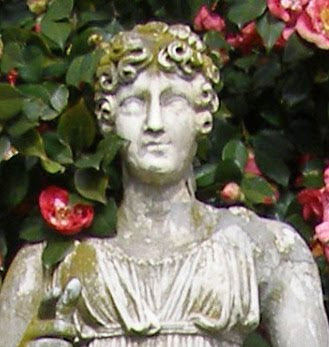
. . . that I love her camellia corsage and mossy green hair. A few minutes' walk past the North Vista is the Scott Gallery, below. As mentioned before, it houses the Huntington's American Art collection.

[via nytimes.com]
Through the gallery's loggia and across a large lawn is the Conservatory, below, behind which is the popular Children's Garden. Beyond that is the mausoleum, eternal resting place of the Huntingtons.

Turn left in the middle of that lawn and you'll take a short walk up to the small Boone Gallery,
below. Inside this building is what brought me to The Huntington in the first place. More on that, next time.

[via huntington.org]
Next post: The Art All Around Us. Here's a hint. . .

* The Blue Boy is thought to be a portrait of Jonathan Buttall, the son of a wealthy British hardware merchant and was painted ca. 1770 by Thomas Gainsborough.
** Pinkie depicts eleven-year-old Sarah Goodin Barrett Moulton and was painted in 1794 by Thomas Lawrence.
Unless noted otherwise, photos are mine.




